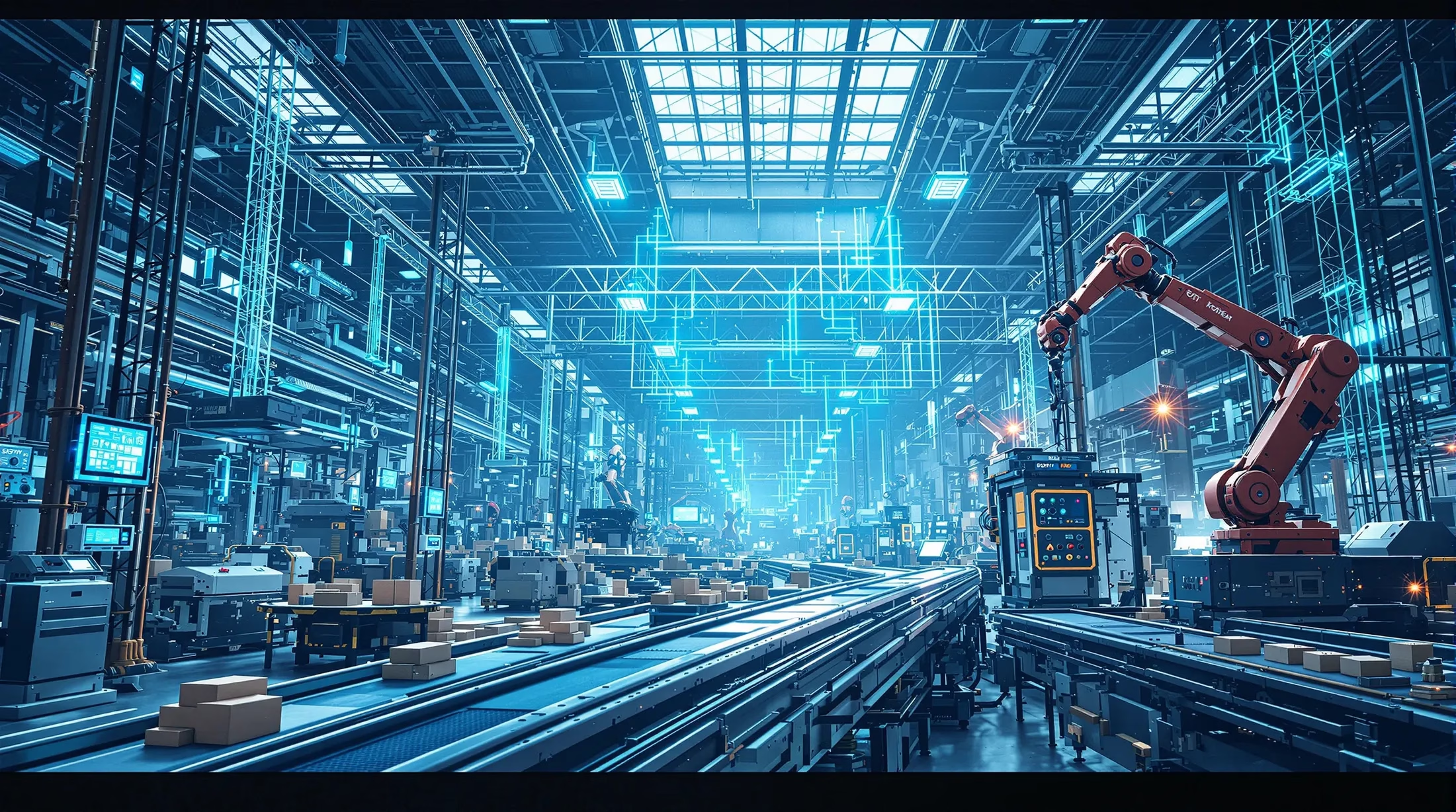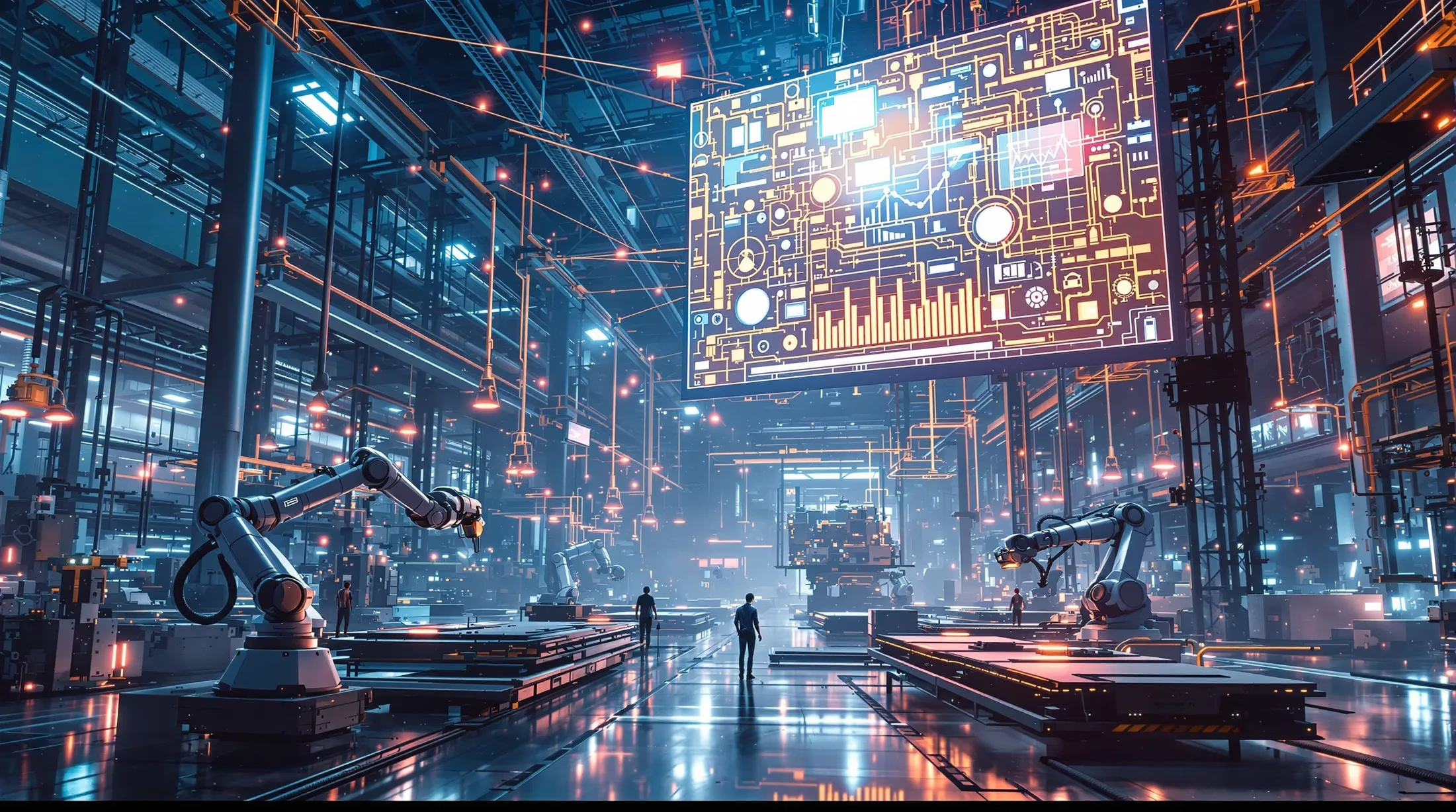In today’s rapidly evolving manufacturing landscape, having the right tools to manage complex operations is crucial for success. Manufacturing ERP systems represent a transformative solution that can revolutionize how your business operates, making it more efficient and competitive. Let’s explore these powerful systems and understand how they can benefit your manufacturing operations.
Understanding Manufacturing ERP Systems
Manufacturing ERP (Enterprise Resource Planning) systems are comprehensive software solutions that integrate and streamline complex manufacturing operations. These sophisticated platforms create a unified information ecosystem connecting various departments – from production floors to executive suites – enabling data-driven decision-making and operational efficiency.
These systems offer real-time visibility across operations, allowing manufacturers to:
- Optimize resource allocation effectively
- Minimize production waste
- Respond rapidly to market changes
- Enhance collaboration between departments
- Drive continuous improvement initiatives
What is an ERP System?
An ERP system functions as the central nervous system of a manufacturing business, integrating various operational functions into a cohesive, data-driven ecosystem. This comprehensive platform eliminates information silos by connecting:
- Financial management operations
- Human resources processes
- Supply chain operations
- Customer relationship management
- Production planning and control
The Role of ERP in Manufacturing
In manufacturing environments, ERP systems serve as operational command centers, orchestrating complex processes into streamlined workflows. These platforms establish standardized processes while maintaining flexibility for unique business challenges.
| Key Function | Business Impact |
|---|---|
| Real-time Analytics | Enables proactive decision-making and bottleneck identification |
| Supply Chain Management | Improves visibility into supplier performance and inventory levels |
| Production Planning | Balances customization with operational efficiency |
| Quality Control | Maintains consistent product quality standards |
Key Features of Manufacturing ERP Systems
Manufacturing ERP platforms combine robust core functionality with industry-specific capabilities to optimize production processes. These comprehensive solutions enable seamless data flow between departments, from initial customer order to final delivery, eliminating information gaps and redundant work.
Inventory Management
Advanced inventory management capabilities form the cornerstone of effective manufacturing ERP systems, offering:
- Real-time inventory tracking across multiple locations
- Lot tracking and serial number management
- Expiration date monitoring
- Automated reorder point calculations
- Inventory forecasting with seasonal adjustments
- Barcode scanning integration
Production Planning and Control
Production planning and control functionality in manufacturing ERP systems transforms operational efficiency through comprehensive scheduling and monitoring capabilities. These systems leverage advanced demand forecasting tools that analyze historical data and market trends to predict future production needs.
- Dynamic rescheduling capabilities for order reprioritization
- Real-time production control with digital work instructions
- Machine integration and labor tracking systems
- Manufacturing execution data capture and variance analysis
- Visual production boards for enhanced visibility
- Capacity planning tools with what-if scenario modeling
This closed-loop system enables continuous improvement by identifying operational bottlenecks, setup inefficiencies, and quality issues affecting throughput. The integration of these features empowers manufacturers to maximize production efficiency while maintaining flexibility in response to market changes and supply chain disruptions.
Quality Management
Comprehensive manufacturing ERP systems distinguish themselves through integrated quality management capabilities that span the entire production lifecycle. These systems implement rigorous quality controls from supplier management through to finished product inspection.
| Quality Component | Function |
|---|---|
| Process Control | In-process quality checks and statistical analysis |
| Documentation Management | Control systems and employee training verification |
| Equipment Monitoring | Calibration tracking and maintenance scheduling |
| Compliance Management | Audit management and regulatory adherence |
Quality dashboards provide real-time visibility into critical metrics such as first-pass yield, defect rates, and supplier performance. This systematic approach not only reduces costly scrap and rework but also strengthens regulatory compliance and customer confidence through consistent product excellence.
Top ERP Solutions for Manufacturing
The manufacturing ERP market offers specialized solutions designed to address industry-specific challenges and enhance operational efficiency. Leading platforms combine robust functionality with advanced features for supply chain management, regulatory compliance, and data-driven decision-making capabilities.
Leading ERP Vendors
- NetSuite – Excels in cloud-based end-to-end visibility and financial management
- Epicor Kinetic – Specialized for discrete and mixed-mode manufacturing
- Infor CloudSuite Industrial – Offers industry-specific capabilities for various manufacturing sectors
- SAP S/4HANA – Provides enterprise-grade solutions with advanced analytics
- Microsoft Dynamics 365 – Features strong inventory and warehouse management
Mid-sized manufacturers can benefit from specialized solutions like IQMS (DELMIAworks), Acumatica Manufacturing Edition, and Plex Manufacturing Cloud, which offer targeted functionality at competitive price points. These platforms combine manufacturing expertise with technological innovation to adapt to evolving production needs.
Custom vs. Off-the-Shelf ERP Solutions
| Solution Type | Advantages | Considerations |
|---|---|---|
| Off-the-Shelf | Faster implementation, lower initial costs, regular updates | May require process adaptation |
| Custom | Precise workflow matching, specialized features | Higher costs, longer implementation |
| Hybrid | Balanced functionality, configurable features | Moderate customization needs |
Many manufacturers now opt for a hybrid approach, selecting industry-specific solutions that allow for configuration while maintaining standardized core functionality. This strategy enables companies to balance unique operational requirements with system maintainability and efficiency.
Benefits of Implementing ERP in Manufacturing
Manufacturing ERP systems deliver transformative advantages by creating a unified operational ecosystem where data flows seamlessly between departments. These comprehensive platforms enable faster, data-driven decision-making while providing unprecedented visibility across the entire value chain. Through integration of previously isolated functions, organizations can effectively identify bottlenecks, optimize resources, and respond rapidly to market dynamics.
- 10-20% reduction in operational costs
- 15-25% improvement in on-time delivery rates
- Enhanced data accuracy and compliance capabilities
- Streamlined cross-departmental operations
- Improved supply chain visibility and control
Improved Efficiency and Productivity
| Area | Impact |
|---|---|
| Administrative Tasks | Up to 70% reduction in manual workload |
| Production Output | 20-30% increase without additional expenses |
| Quality Control | Earlier defect detection through integrated testing |
| Sales Operations | Real-time delivery estimates and capacity planning |
Manufacturing ERP systems drive efficiency through standardized processes and automated data collection. Advanced scheduling algorithms optimize machine utilization and minimize setup times, while integrated workflows enable proactive quality control and strategic purchasing decisions.
Cost Reduction
- Inventory holding costs reduced by 15-25% through optimized stocking levels
- Decreased production costs via improved resource utilization
- Reduced procurement expenses through volume discounts and strategic sourcing
- Lower administrative overhead from automated workflows
- Minimized compliance costs through integrated quality management
- Decreased customer service expenses due to improved delivery performance
These cost reduction benefits typically deliver ROI within 12-18 months for mid-sized manufacturers, with ongoing annual savings of 5-8% of total operational expenses. For organizations facing intense pricing pressure, these improvements often determine market competitiveness and profitability.
Challenges in ERP Implementation
ERP implementation represents a significant organizational challenge, with 50-75% of projects experiencing impacts on timelines, budgets, or expected outcomes. Manufacturing environments present unique complexities due to intricate workflows, specialized equipment integrations, and industry-specific requirements that must be accurately reflected in the system.
Common Implementation Pitfalls
- Underestimating process adaptation complexity
- Resistance to workflow modernization
- Insufficient resource allocation
- Complex data migration challenges
- Inadequate user training programs
- Limited testing of production equipment integrations
Successful implementations require balancing technical requirements with change management, training, and organizational readiness. Organizations must carefully manage the migration of historical data while maintaining ongoing operations, ensuring proper stakeholder engagement throughout the process.
Strategies for Successful ERP Integration
Successful manufacturing ERP implementations require comprehensive planning with realistic timelines and clearly defined objectives. Cross-functional implementation teams, comprising representatives from production, engineering, quality, purchasing, sales, and finance departments, ensure diverse perspectives during system configuration.
- Executive sponsorship providing visible leadership support
- Cross-departmental conflict resolution mechanisms
- Resource allocation throughout implementation
- Phased implementation approach for risk reduction
- Thorough data cleansing and validation processes
- Comprehensive testing protocols
- Robust change management programs
The phased implementation approach significantly reduces risk compared to „big bang” strategies, allowing manufacturers to maintain operational stability while progressively realizing benefits. Comprehensive testing that simulates real-world scenarios helps identify configuration issues before they impact operations.
Future Trends in Manufacturing ERP Systems
Manufacturing ERP is evolving beyond traditional functionality to incorporate emerging technologies that deliver unprecedented levels of intelligence and operational efficiency. These innovations are transforming ERP from transactional systems into predictive platforms that provide strategic insights and enable rapid market adaptation.
| Trend | Impact |
|---|---|
| Market Growth | 10% CAGR through 2028 |
| Key Drivers | Digital transformation, operational agility |
| Focus Areas | Cloud migration, AI integration, IoT connectivity, mobile accessibility |
Cloud-Based ERP Solutions
- Over 60% of manufacturers prefer cloud deployment
- Reduced capital expenditure requirements
- Faster implementation timelines
- Automatic updates and enhanced accessibility
- Real-time inventory tracking capabilities
- Improved supply chain visibility
- Scalable resources based on business needs
Cloud platforms facilitate better integration with suppliers and customers through standardized APIs and web services, creating connected ecosystems that respond quickly to market demands and supply chain disruptions.
AI and Machine Learning in ERP
| Application Area | Performance Impact |
|---|---|
| Quality Control | 35% reduction in quality issues |
| Equipment Maintenance | 50% reduction in downtime |
| Demand Forecasting | Improved accuracy through multiple variables |
| Production Planning | Optimized inventory and reduced stockouts |
AI-powered systems analyze vast amounts of production data to identify patterns and anomalies, enabling predictive maintenance and quality control. Machine learning algorithms continuously improve accuracy in demand forecasting by incorporating historical sales data, market trends, seasonal factors, and environmental conditions.








